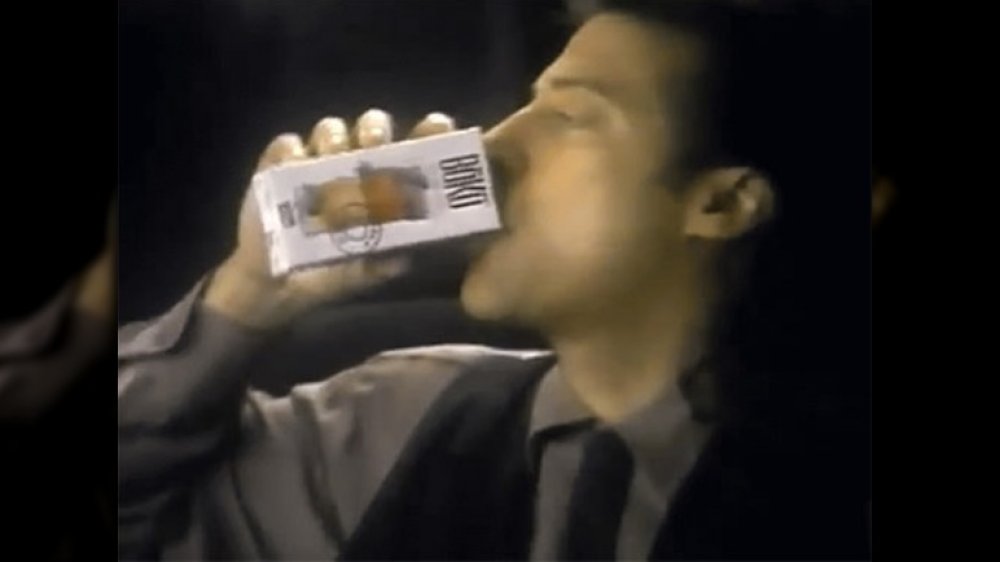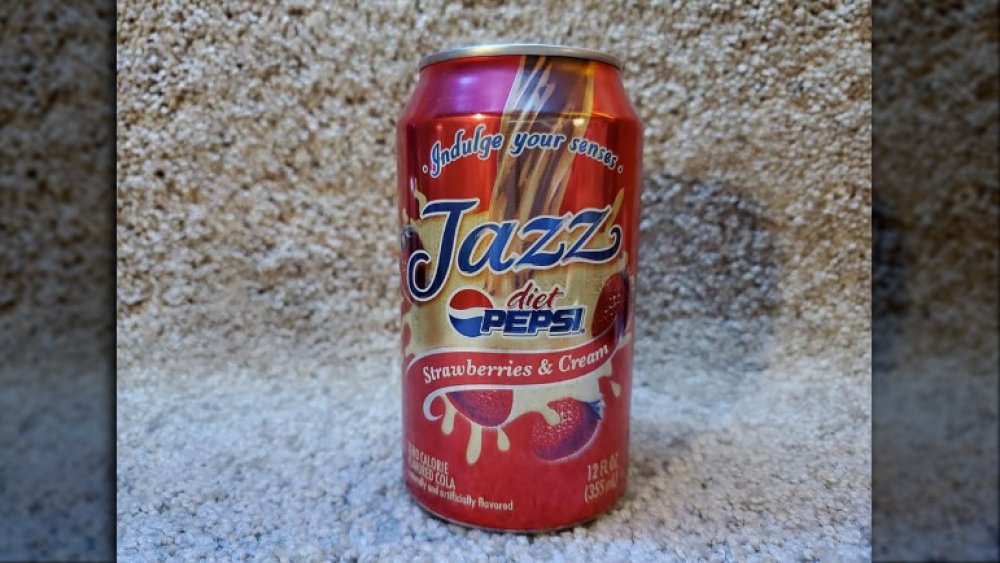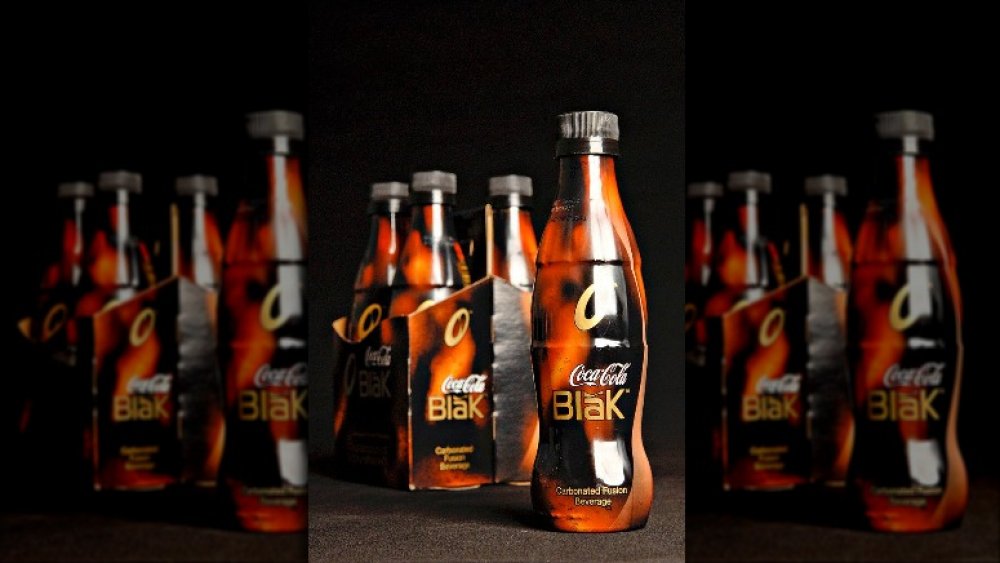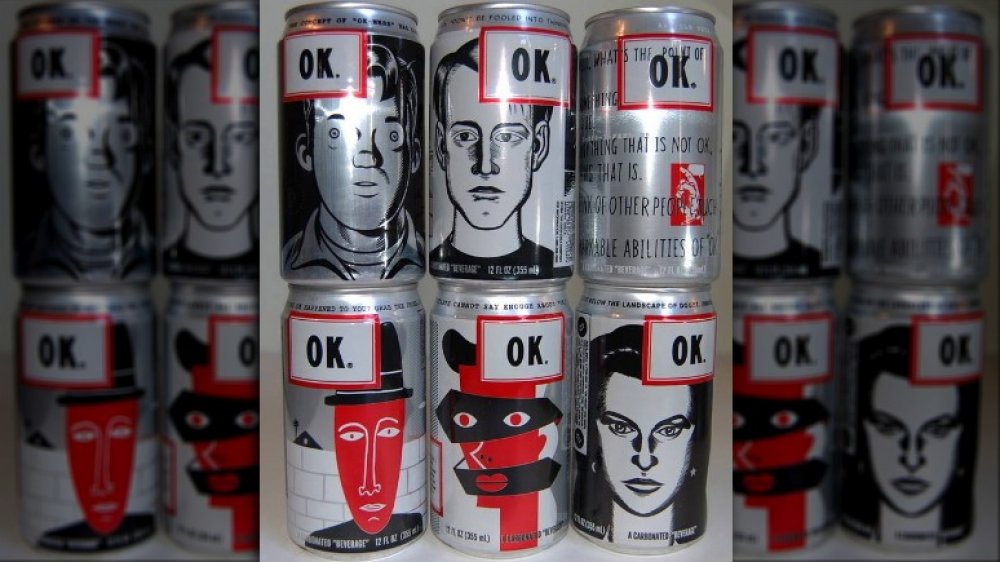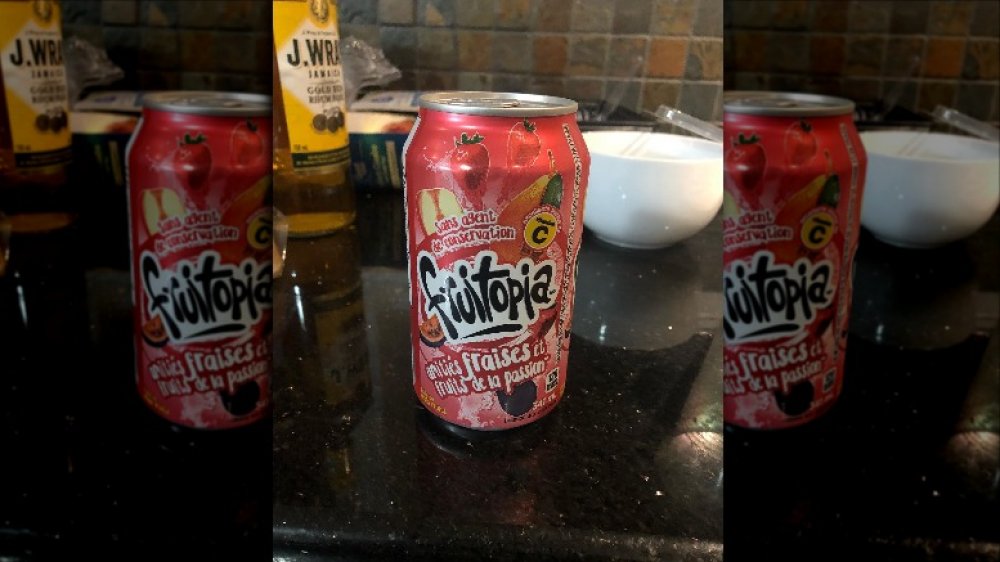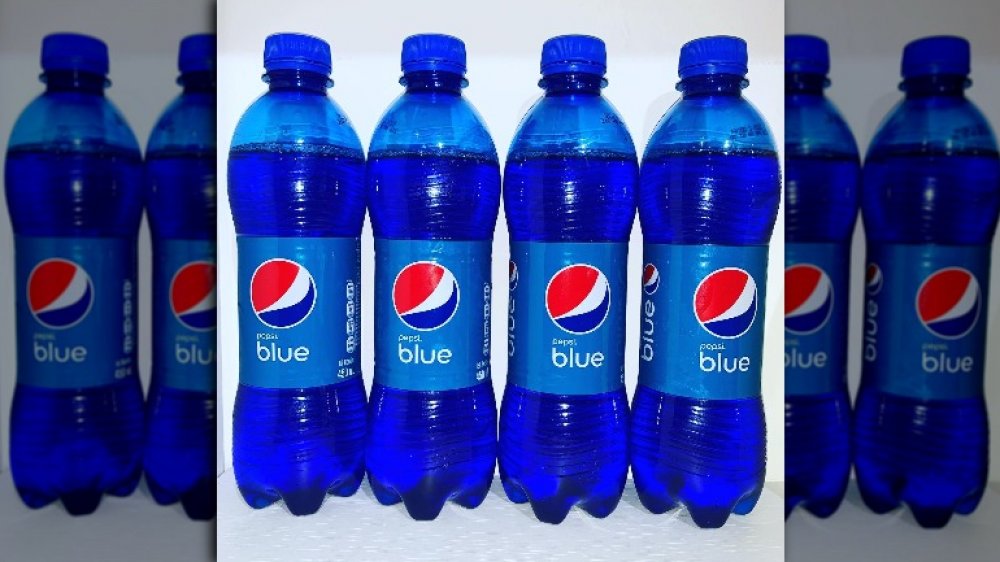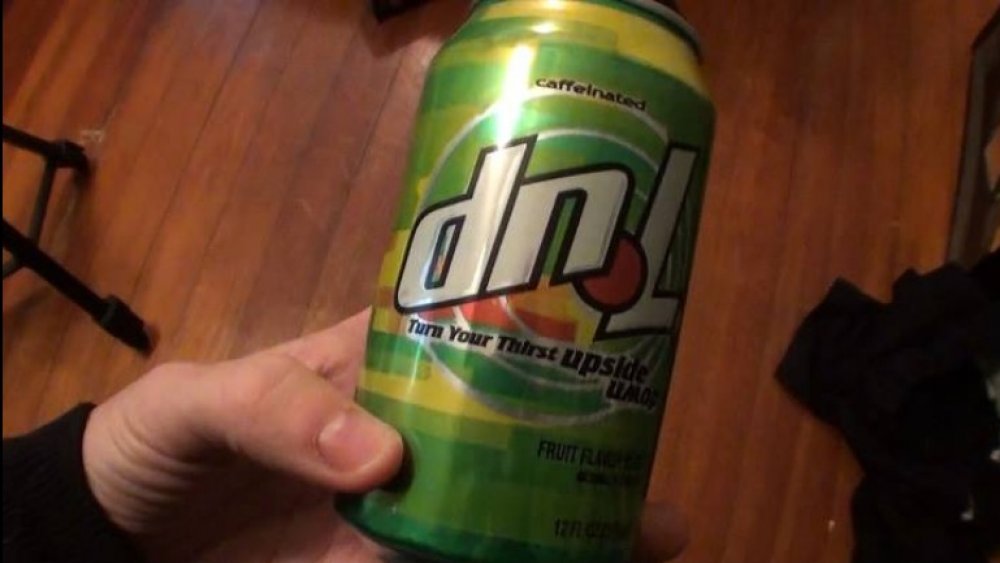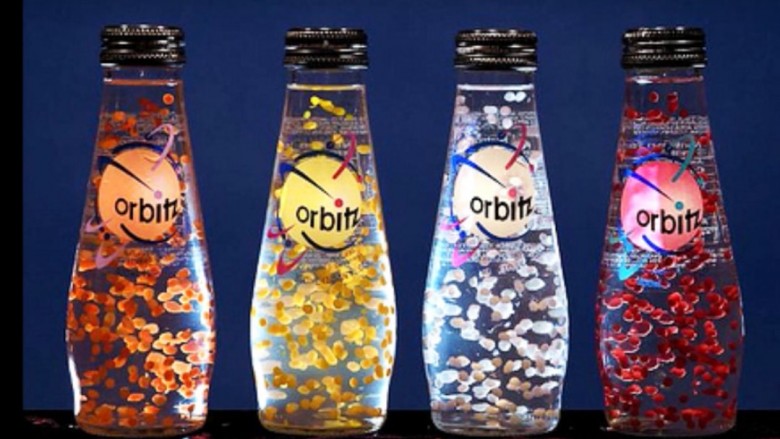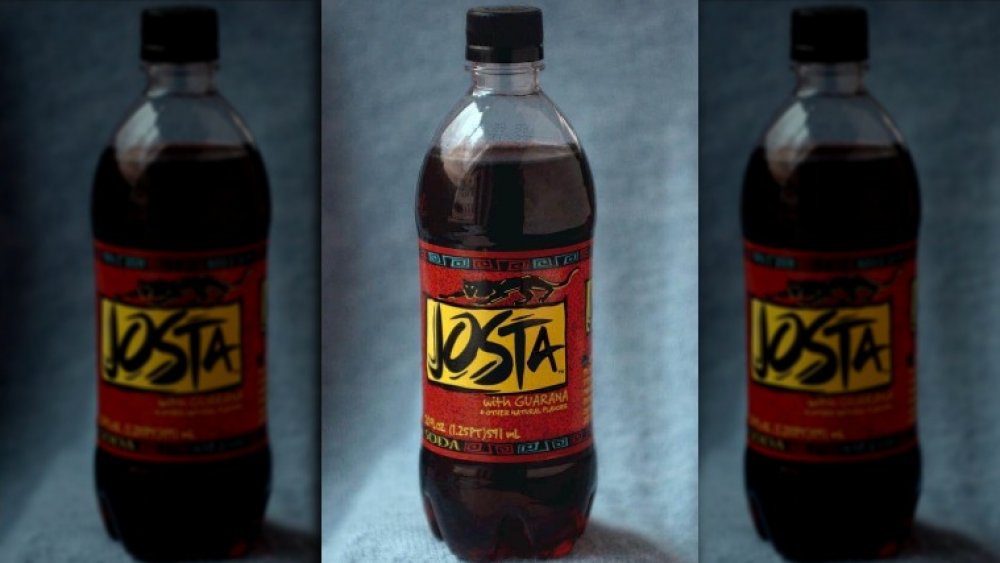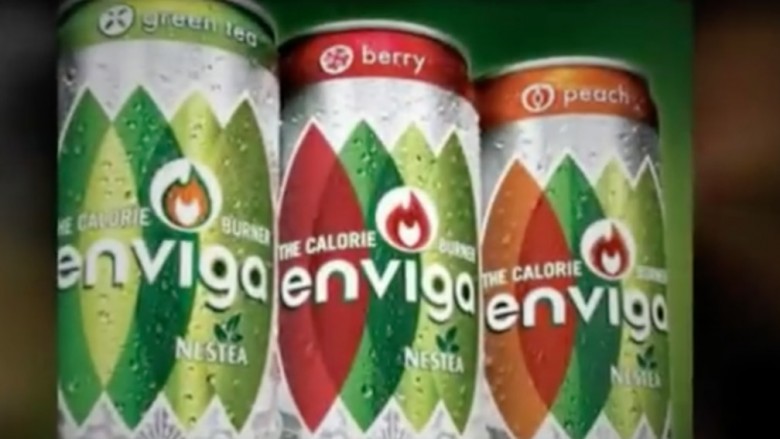Soft Drinks You Totally Forgot Existed
intro
The flagship soft drinks for Coca-Cola and Pepsi are so ubiquitous you can get their products in Portland or in Paris, and you'd never imagine they could ever be discontinued. Coke and Pepsi or definitely here to stay, right?
But what about the soft drinks who hang out in the background until they slowly fade away? Most of the time, they disappear so quietly you never even realize they're gone. Then one morning you wake up from a dream craving a Squeezit — something you haven't had since second grade — and you realize you haven't seen them around for quite a while. This is a tribute to all of those soft drinks that might have tasted pretty good, but were forgotten about, not only when they left the store shelves, but when they were on them as well.
These are the soft drinks you totally forgot existed. How many do you miss?
BoKu
Before McCain's BoKu was released in 1989, the juice box market was dominated by brands that were more popular in classrooms than boardrooms. In comes BoKu, the first juice box marketed toward adults. So what made BoKu more grownup? It came sans straw, because I guess it was juvenile to be seen sticking a tiny plastic straw in a juice box, and the flavor lineup, which included white grape-raspberry, orange peach, and orange banana were for a more grownup pallet.
Most consumers didn't know about the product until the brand brought on comedian Richard Lewis as a spokesperson in 1991. Lewis appeared in a series of ads that were more memorable than the drink itself. BoKu wasn't just after the juice box market, but they saw themselves as a classier alternative to Coke and Pepsi with Lewis even saying in one ad, "All this carbonation is very unsettling! I don't want to belch anymore, belching is for babies!"
The adult juice box lost popularity and went into obscurity once the middle of the decade hit. At this time, the juice also became available in glass bottles. By 1995, BoKu was trying to lure a slightly younger demographic, and surprisingly stayed on grocery store shelves as a piece of '90s nostalgia until it was discontinued in 2003.
Diet Pepsi Jazz
Diet soda drinkers used to get the short end of the stick when it came to new products, but all of that changed in 2006 when Pepsi launched an entire line of soft drinks dedicated to those who love diet, called Diet Pepsi Jazz. The product, which was dubbed, "The new sound of cola" consisted of three cola-based flavors: black cherry vanilla, strawberries and cream, and caramel cream.
I don't drink soda often anymore, but back in college I practically had a constant stream of diet soda coursing through my veins, and some of that was of the Diet Pepsi Jazz variety. The three flavors at first sip were pretty delicious and different and they were even better when used a mixer, but after a few cans, they got a bit sickening. A good soft drink needs to have consumers craving more, and Diet Pepsi Jazz failed at that. The entire line of soft drinks were discontinued by the end of the decade.
Coca-Cola BlaK
If you've done any traveling abroad, you'll know there are dozens upon dozens of soft drinks that will probably not make it onto store shelves here in the United States. Coca-Cola BlaK was a sad exception. This hybrid of coffee and Coca-Cola was first launched in France in early 2006 and then in the U.S. later that year. It was packaged in a sexy 8-ounce bottle and was marketed as a sophisticated soft drink.
Katie Bayne of Coca-Cola said at the time in a press release, "There is no other beverage available today quite like Coca-Cola Blak. Imagine the refreshing taste of an ice-cold Coca-Cola that finishes with a rich essence of coffee." The majority of consumers thought it was utterly disgusting. Anderson Cooper even famously spat it out live on air while co-hosting Live With Regis and Kelly. Coca-Cola BlaK was also the only soda to be left in the back of my parents' refrigerator unconsumed for 5 years until they sold their house. Curiosity got the best of me and I cracked that bad boy open, quickly pulling an Anderson Cooper into the kitchen sink. Coca-Cola BlaK was phased out by the brand in 2007 becoming the 2000s version of New Coke.
OK Soda
OK Soda was marketed as the anti-Coke for cynical Gen-Xers who were listening to bands from Seattle and were jaded toward advertising. It might have been seen as the "anti-corporate" choice, yet it was still manufactured by Coca-Cola, and the demographic OK Soda was trying to target saw right through it.
Back in 1993, Coca-Cola thought it would be a stellar idea to re-hire the guy who launched New Coke in the 1980s, Sergio Zyman to bring OK Soda to life. The tagline, "Things are going to be OK," along with their commercials and marketing was something completely different for soft drink brands at the time. Sure, the commercials now look like something a freshman art school student would come up with six hours before their final is due, but over 20-years-ago this was pretty cutting edge.
OK had a brand manifesto with entries printed on cans such as,"What's the point of OK? Well, what's the point of anything?" The soda also had a user-generated campaign where consumers could dial 1-800-I-FEEL-OK. and leave messages about the soda and answer questions from a personality quiz. However, Coca-Cola soon learned that it's hard to be counterculture when you're a big corporation. The beverage was known more for their blase advertising tactics than the flavor of the soda, which has been described as unique and fruity with a hint of spice. OK Soda was only available in select markets — it didn't receive a nationwide rollout before it was discontinued in 1995.
Fruitopia
For a brief moment in the 1990s a certain fruit drink captured the tongues of tweens and teens around the country. In the 1980s, Sergio Zyman helped launch the biggest bomb of a soda, New Coke. In the 1990s he was back and branded two new drinks for a new generation: OK Soda and Fruitopia.
OK was supposed to be for the folks who listened to indie bands, whereas Fruitopia was for the new age hippy crowd you'd see at the Lilith Fair. In a New York Times article published during the brand's launch in 1994, a beverage analyst said, "There's no question Fruitopia is very much of a me-too, it's basically a Snapple knock-off." With flavors like Grape Beyond, Total Fruit Integration, and Strawberry Passion Awareness you could practically smell patchouli oil when you grabbed a bottle of the stuff. As the nouveau hippy trend of the mid '90s died, Fruitopia faded into a fruit juice oblivion (Was that a name of a flavor? It could have been) being discontinued at the start of the new millennium. However, if you're craving a Fruitopia, just take a trip to our neighbors to the north where it's still widely available to purchase.
Pepsi Blue
If Crystal Pepsi was quintessentially '90s, Pepsi Blue was for the next decade. The bright blue hued soda was released in 2002. In a CNN Money article from the same year, a spokesperson from Pepsi said, "Pepsi Blue was one of more than 100 concepts Pepsi tested. Two-thirds of teenagers the company asked said they would buy it regularly."
They marketed this beverage to teens extremely hard, recruiting a slew of early '00s icons, from Britney Spears to Papa Roach, to appear in commercials for the wild berry cola concoction that tasted like if you left a bag of cheap cotton candy in your car on a hot day and it liquified. Pepsi Blue was only on the shelves for two years before it was pulled. Although it hasn't been available here in the United States in 13 years, it can be found in Indonesia.
dNL
If you think the extreme soda trend a la Surge ended in the 1990s, you're probably forgetting about a little beverage launched in 2002 from the folks who bring you 7Up. As the name implies, dnL was 7Up turned upside down. If regular 7Up lived in the suburbs, drove a Camry, and was an accountant, dnL had multiple facial piercings, lived in a punk flophouse, and worked off and on as a BMX bike tech. 7Up is clear, dnL was green. 7Up was caffeine-free, dnL had enough caffeine to help you stay focused while playing World of Warcraft.
According to BevNET, dnL was a "...strong, full-flavored soft drink guaranteed to flip your perspective on life and give you a big kick of green." You know, because green is a flavor. The Soda Can Collection blog says dnL was discontinued in 2006 right after when the also forgotten about, calcium-fortified 7Up Plus was released.
Orbitz
The first time I saw Orbitz I was at Faneuil Hall in Boston. I was 10 years old and begged my parents to buy me the weird lava lamp looking drink with tiny balls suspended inside. My father said to me, "Who the hell would want to drink something with chunks floating around in it?" My pleading for the drink from another planet (It was actually made in Canada) worked and after just one sip, I couldn't stomach it. My reaction was like most consumers, and the drink was discontinued less than a year after its release in 1998.
According to Bustle, the tasteless balls stayed in place by the use of Gellan Gum, "...which mimicked the connective abilities of a spider web." Maybe the product would have been successful if it actually tasted good. Pineapple Banana Cherry Coconut is an entire product flavor lineup, but that was a singular flavor in the Orbitz universe. Orbitz disappeared quickly and is now a piece of often forgotten '90s nostalgia. The website, which told you to "enter the bowels of the Orbiterium" has long since been replaced by a well-known travel booking site, but bottles can still be found on eBay for a heavy premium.
Josta
If you're reading this right now holding a Monster or a Red Bull, you should pour a little out in tribute to Josta, the O.G. energy drink. Josta was conceived by PepsiCo in 1995 and was the first energy drink produced and distributed by a major beverage company. Seen as the perfect companion for an all-night rave where "Firestarter" by The Prodigy would be played on a loop, Josta was a fruity cola hybrid of a soda with gobs of caffeine and guarana, which was quite the novelty back in 1995.
It was discontinued in 1999, and while bringing back Coca-Cola's Surge became a movement, Josta sort of became a bit of an obscurity, but don't tell that Jason Latona, who told The Daily Dot that he's been trying to bring back the energy elixir since 2004 to no avail. It does have its fans and a few change.org petitions floating around to convince Pepsi to bring back the Panther, but as of right now,it doesn't look like Pepsi is going to be bringing it back even for a retro release.
Enviga
Oh, Enviga. We hardly knew thee. Wait, you don't remember Enviga, the slightly carbonated green tea juice drink? Let me jog your memory. Enviga was a joint venture between Nestle and Coca-Cola that wasn't a low or no calorie drink, but rather negative calories.
When it was first launched in three flavors (green tea, berry, and peach) back in 2006 Enviga was the first beverage of its kind to announce that it burned calories. Basically it claimed that if you drank three cans a day you could burn an additional 50 to 100 calories, even if you just sat on your booty and did nothing but drink Enviga. Less than a few months after its release in February of 2007 the Center for Science slapped Coca-Cola and Nestle with a nice lawsuit for bogus weight loss claims. The lawsuit, which was later dismissed in 2010 completely destroyed the brand's image and by 2008 the drink was practically nowhere to be found.

